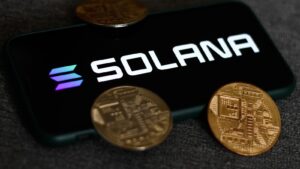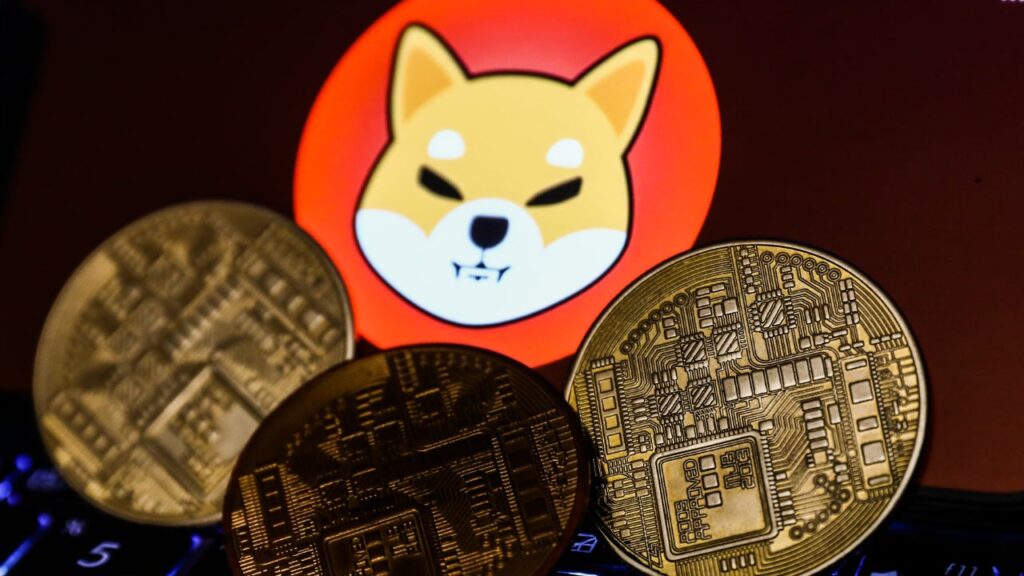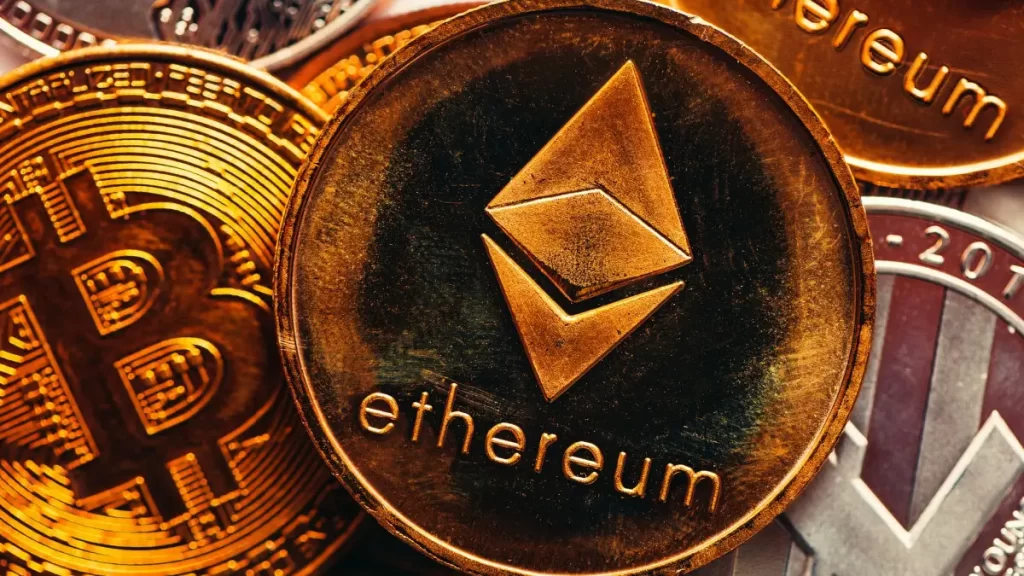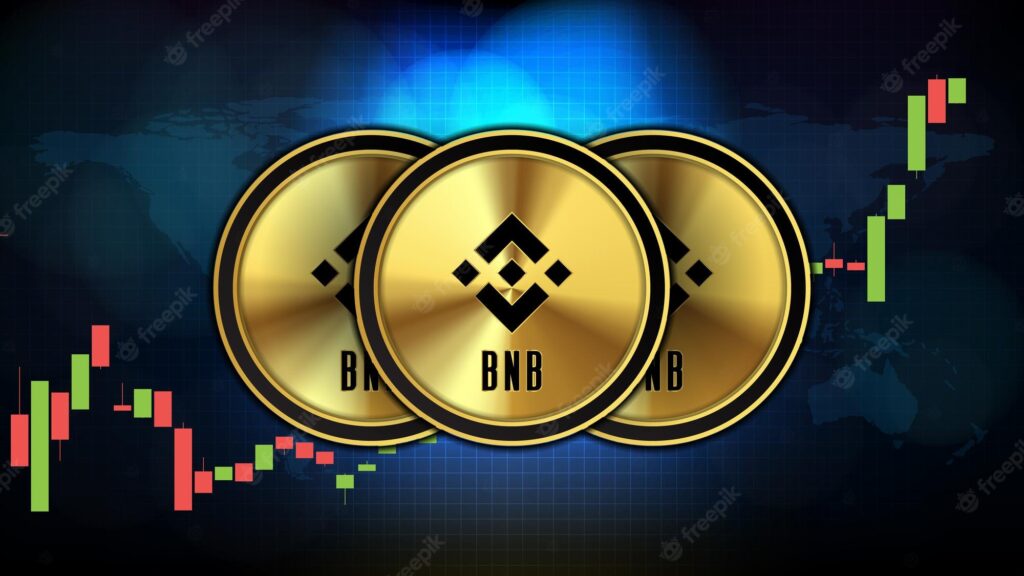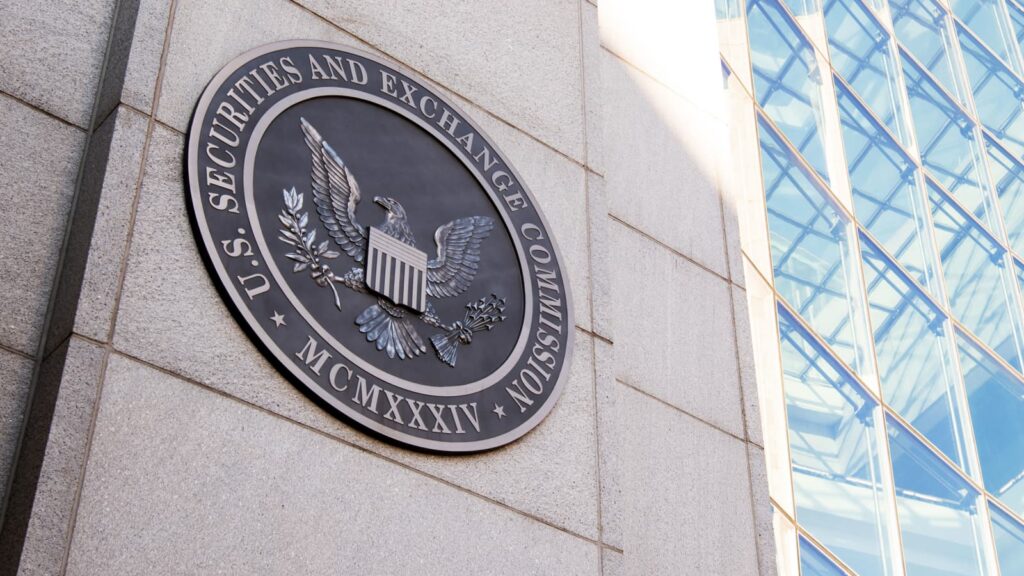In a notable development in the cryptocurrency market, GRAM, recognized as one of the leading growth tokens of 2024, has been officially listed on the MEXC exchange. The crypto community has often likened GRAM to Bitcoin, referring to it as the Bitcoin equivalent for Telegram users. This listing marks a pivotal moment for GRAM, showcasing its popularity and potential within the crypto space.
Key Developments
- Trading Pair Availability: MEXC has introduced the GRAM/USDT trading pair, providing traders with a new opportunity to engage with one of the most sought-after tokens on the TON blockchain.
- Verification and Popularity: Prior to its listing, GRAM became the most popular token on the TON blockchain, and now, it underwent thorough independent verification by a major exchange, a process aimed at ensuring the coin’s demand within the crypto community. The successful listing on MEXC serves as further validation of GRAM’s promising prospects
- Previous Listings and Purchasing Options: Before its debut on MEXC, GRAM was available on several decentralized exchanges including STON.fi, Ton.Diamonds, and DeDust. Additionally, it can be purchased through the P2P section of CryptoBot in Telegram.
Why Invest in GRAM?
1. Strong Technical Foundation: As the premier project on the TON blockchain, developed by Telegram and refined by independent programmers, GRAM benefits from high throughput and scalability. This technical prowess supports its use in various financial transactions and as a store of value.
2. Decentralization and Accessibility: With no single owner, no pre-mining during its launch, and a vibrant community steering its direction, GRAM embodies true decentralization. The token is mineable using regular computers with graphics cards, emphasizing its accessibility and distribution among a wide user base.
3. Promising Growth Outlook: The upcoming Bitcoin halving is expected to catalyze growth across the crypto market, with well-positioned altcoins like GRAM poised to benefit significantly. Since its launch in January 2024, GRAM has already achieved a staggering 28,000x increase in value (from $0.00000107 to $0.03, peaking at $0.044), demonstrating its potential for future gains.
Looking Forward
Following its successful listing on MEXC, the GRAM community anticipates further listings on major exchanges in the near future. According to the GRAM community Telegram group, recently, more than one million GRAMs have been sent to accounts on MEXC and OKX, indicating a high level of activity. This expansion is expected to attract new investors and contribute to the token’s growth trajectory, making now an opportune time to consider adding GRAM to one’s investment portfolio.
The integration of GRAM into MEXC not only underscores the token’s viability and demand but also signals exciting times ahead for investors and the broader TON blockchain ecosystem.
In an engaging post on the X/Twitter platform, Ethereum cofounder Vitalik Buterin brought the Shiba Inu (SHIB) meme cryptocurrency into the spotlight, stirring a flurry of reactions from the SHIB community and various crypto influencers.
The enigmatic SHIB lead, Shytoshi Kusama, joined the conversation by responding to Buterin’s tweet with enthusiasm.
The dialogue was sparked by Buterin’s reflection on a significant moment involving the Shiba Inu cryptocurrency.
He reminisced about when he received a massive amount of SHIB—500 billion coins, precisely half of the meme coin’s total supply—from the project’s anonymous founder, Ryoshi, in 2021.
Buterin revealed his decision to donate a substantial portion of this SHIB to charity, motivated by his expectation that the coin’s value would plummet dramatically.
He aimed to ensure the charities could benefit from the donation, hoping they could cash out between $10 million and $25 million.
However, SHIB’s performance exceeded his expectations, a development that was warmly received by the SHIB community.
READ MORE: ARK Invest Sells Off $31.5 Million in Robinhood Shares Amid Crypto-Friendly Broker’s Stock Surge
“But of course SHIB massively outperformed my expectations,” he admitted, eliciting a wave of excitement and a bullish hashtag from Kusama in response.
Further stirring the crypto market, a report by the cryptocurrency tracking bot Whale Alert noted a significant withdrawal of SHIB from the KuCoin exchange.
A massive two trillion Shiba Inu coins, valued at approximately $62,232,000, were moved off the platform.
This event was part of a larger trend that saw KuCoin losing around $500 million worth of cryptocurrencies in 24 hours, as covered by U.Today.
The withdrawals began en masse following news that KuCoin and its founders faced criminal charges from the U.S. Department of Justice.
The accusations against them included operating a platform that facilitated illicit money laundering and violating the Bank Secrecy Act.
This case against KuCoin paralleled a similar accusation made against former Binance CEO, CZ.
The charges stemmed from activities between 2020 and 2022, during which the platform also received significant funds from the sanctioned entity Tornado Cash without reporting suspicious transactions.
To submit a crypto press release (PR), send an email to sales@cryptointelligence.co.uk.
In a remarkable turn of events, the Munchables game, an Ethereum-based NFT venture, witnessed the return of $62.8 million in Ether, previously stolen in a security breach, without the demand for a ransom.
This unexpected resolution unfolded over nearly eight hours when a Munchables developer, initially responsible for the exploit, decided to return the pilfered funds.
The breach was reported on March 26, around 9:30 pm UTC, resulting in a loss of over 17,400 ETH from the GameFi application.
Following the incident, Munchables collaborated with blockchain security experts, including PeckShield and ZachXBT, to trace the stolen assets in hopes of recovery.
The investigation revealed that the breach was linked to a developer with North Korean ties, known by the alias “Werewolves0943.”
This individual was hired by the Munchables team, leading to the vulnerability.
By March 27, at 4:40 am UTC, Munchables identified the culprit as one of its developers, and after an hour of negotiations, the individual agreed to return the stolen Ether.
Munchables confirmed in a statement, “The Munchables developer has shared all private keys involved to assist in recovering the user funds.
“Specifically, the key which holds $62,535,441.24 USD, the key which holds 73 WETH, and the owner key which contains the rest of the funds.”
Pacman, the creator of the Ethereum layer-2 blockchain Blast, on which Munchables operates, expressed gratitude towards ZachXBT for aiding in the resolution.
He announced that the ex-developer chose to return the entirety of the funds without a ransom.
Pacman’s involvement is crucial for redistributing the now-retrieved assets to the rightful owners.
Meanwhile, Munchables advises affected users to heed only official communications to avoid potential refund scams.
This incident follows a separate exploit where a hacker extracted around $24,000 from four DeFi aggregator ParaSwap addresses.
ParaSwap, with the help of white hat hackers, managed to reclaim the stolen funds, beginning the process of refunding users.
The protocol has since taken measures to secure its system, particularly addressing vulnerabilities in the AugustusV6 smart contract.
Despite these efforts, 213 out of 386 impacted addresses had not revoked permissions for the compromised contract as of March 25, indicating ongoing risks in the DeFi space.
To submit a crypto press release (PR), send an email to sales@cryptointelligence.co.uk.
Do Kwon, the co-founder of Terraform Labs embroiled in allegations of fraud, has been released from Montenegrin custody.
His freedom comes as the Supreme Court weighs the merits of extradition requests from both the United States and South Korea.
Bloomberg reported his release on March 23, following a suspension by the Supreme Court of a lower court’s decision to extradite Kwon to South Korea.
This legal drama unfolds against the backdrop of the Terra collapse in 2022, which erased about $60 billion from the crypto market. Kwon, facing fraud charges in both South Korea and the U.S., was released from prison as his sentence for possessing forged documents concluded.
Darko Vukcevic, a prison official, stated, “We released Do Kwon from prison as his regular prison term for traveling with fake papers ended.
Since he is a foreign citizen and his documents were withheld, he was taken for an interview to the police directorate for foreigners, and they will deal with him further.”
The Supreme Court’s Council is now poised to decide on Kwon’s potential extradition to South Korea, where he faces less severe penalties compared to the U.S.
READ MORE: StaFi Liquid Staking Protocol Launches Testnet Awaiting StaFi 2.0 Mainnet Launch
In the latter, he could be charged with eight felonies related to TerraUSD’s dramatic $40-billion implosion in 2022.
Kwon’s legal representative confirmed his client’s release and mentioned that his passport had been confiscated to prevent him from leaving Montenegro.
Subsequently, Kwon was moved to a facility for foreigners, with his lawyer signaling intentions to seek legal permission for Kwon to stay free pending extradition decision.
This legal tangle was further complicated by the chief prosecutor’s intervention, pointing out procedural flaws in the extradition process favoring South Korea.
As courts deliberate without a clear timetable, Kwon’s fate hangs in the balance, with significant charges awaiting him in the U.S. following his arrest in March 2023 for using counterfeit travel documents.
The extradition saga continues, reflecting the international legal complexities surrounding high-profile crypto fugitives like Kwon.
To submit a crypto press release (PR), send an email to sales@cryptointelligence.co.uk.
Grayscale Investments has introduced a new investment fund designed for affluent clients seeking to diversify their portfolios with income derived from staking cryptocurrency tokens.
Named the Grayscale Dynamic Income Fund, it targets individuals with assets exceeding $1.1 million or a net worth above $2.2 million.
The fund’s strategy involves converting staking rewards into U.S. dollars on a weekly basis, with plans to distribute these earnings to investors quarterly.
Grayscale emphasizes the thorough vetting process for selecting proof-of-stake (PoS) tokens to include in the fund, aiming to manage the intricacies of staking and unstaking various tokens, each with unique requirements.
The firm prioritizes maximizing staking income, viewing capital growth as a secondary goal.
Staking, a process that contributes to the security and efficiency of blockchain networks, involves holding cryptocurrency tokens to earn rewards.
Grayscale has disclosed that its fund will comprise three specific PoS tokens: Osmosis (OSMO), Solana (SOL), and Polkadot (DOT), with respective shares of 24%, 20%, and 14%.
READ MORE: Ripple Launches Groundbreaking Automated Market Maker on XRPL, Revolutionizing DeFi Landscape
The remaining 43% of the fund is allocated to other tokens.
According to Staking Rewards data, the staking reward rates for OSMO, SOL, and DOT are 11.09%, 7.42%, and 11.9%, respectively, with only SOL ranking in the top 10 PoS tokens by market capitalization on CoinMarketCap.
In related news, Grayscale’s venture into a spot Bitcoin exchange-traded fund (ETF) on January 11 has faced challenges, with over $14 billion in outflows since its inception, as reported by Cointelegraph on March 26.
The Bitcoin ETF, which incurs a 1.5% management fee annually—significantly higher than the 0.30% average of other Bitcoin ETFs—has not met the firm’s expectations.
Additionally, Grayscale’s application for an Ethereum Futures ETF has been met with delays by the United States Securities and Exchange Commission, further complicating the company’s ambitious cryptocurrency investment endeavors.
To submit a crypto press release (PR), send an email to sales@cryptointelligence.co.uk.
In the week leading up to March 29, BNB’s value saw a 12% increase, reaching a high of $620, marking a notable upturn and closing the valuation gap with its rival, Ether, which saw a 5% rise in the same period.
Despite this growth, the BNB Chain’s on-chain data sends mixed signals, indicating that the rally might be overextended.
This recent surge in cryptocurrency value has been linked to inflows into spot Bitcoin BTC exchange-traded funds (ETFs).
However, a setback was observed in the week ending March 23, with a net outflow of $890 million from these ETFs, marking their first net outflow since their introduction in January.
Yet, there was a silver lining with a significant decrease in outflows from the Grayscale GBTC fund, which only saw $104 million leave on March 28.
BNB’s momentum in the first half of March, with a 61.7% increase, was dampened after peaking at $645.
This peak brought BNB’s market capitalization to $96.4 billion, down from its all-time high of $116 billion in November 2021.
The total value locked (TVL) in BNB Chain also saw a decline, from $15.7 billion at its peak to $7.1 billion, a 55% reduction.
The crypto market, especially decentralized finance (DeFi), has seen significant contractions since late 2021.
READ MORE: Bitcoin Braces for Supply Crunch as Demand Skyrockets, Warns CryptoQuant
This downturn isn’t unique to BNB Chain, as the total market data for blockchains tracked by DefiLlama decreased by 25%, from nearly $205 billion to $155 billion.
Despite these challenges, BNB Chain remains a key player in the crypto market, rivaling Ethereum’s layer-2 networks in activity levels.
Nearly 2 million active addresses engaged with DApps on BNB Chain in the past week.
The blockchain also stood out for its trading volume, which, unlike Solana and Ethereum, saw an 11% increase, reaching $12.4 billion.
Looking ahead, the future of the cryptocurrency sector is difficult to predict, but derivative metrics like the demand for leverage in BNB perpetual futures contracts offer insights.
The steady 8-hour funding rate of around 0.03%, equivalent to about 0.6% weekly, suggests a cautiously optimistic market sentiment, despite the price challenges at the $620 level.
This careful optimism is bolstered by the enduring interest in leveraged long positions, despite the uncertain market trajectory.
To submit a crypto press release (PR), send an email to sales@cryptointelligence.co.uk.
Since the launch of the United States spot exchange-traded funds (ETFs) for Bitcoin, the cryptocurrency market has seen a significant shift in Bitcoin holdings on exchanges.
Over $9.5 billion in Bitcoin has been withdrawn from exchanges, as reported by Glassnode, an on-chain analytics firm.
This withdrawal trend started on January 11 and has led to a reduction of over 136,000 BTC from exchange balances.
The dynamics of Bitcoin supply are increasingly favoring bulls with continued mass withdrawals observed this quarter.
The volume of Bitcoin on exchanges has dipped to its lowest since April 2018, with only 2,320,458 BTC remaining, indicating a substantial decline in available BTC for trading.
This trend continued with one of the largest single-day withdrawals occurring on March 27, where over 22,000 BTC, equivalent to $1.54 billion, were withdrawn.
The impact of U.S. spot Bitcoin ETFs, though they have been operational for just under three months, is becoming a pivotal factor in the market.
Additionally, notable market activities include a significant transfer of the stablecoin USD Coin (USDC) to Coinbase, highlighted by J.A. Maartunn from CryptoQuant.
READ MORE: Anthropic Shuns Saudi Investments Amid FTX Bankruptcy Sale, Citing National Security Concerns
This record transfer raised speculations about potential buying pressure in the market. Such movements underscore the evolving dynamics in the cryptocurrency market, particularly in the context of Bitcoin supply and demand.
Experts are closely watching the ETFs’ impact on Bitcoin’s supply, anticipating a possible “squeeze” where demand surpasses the available supply, potentially affecting prices.
This scenario is expected to intensify, especially with the upcoming block subsidy halving event in mid-April, which will further reduce the rate of new BTC entering the market to just 3.125 BTC per block.
Charles Edwards, founder of Capriole Investments, commented on the significance of the upcoming halving event, noting it as “the biggest Halving in Bitcoin’s history.”
He pointed out that Bitcoin would become even more scarce than gold, with the supply growth rate halving.
Edwards anticipates increased institutional demand through ETFs, a supply squeeze from the Halving, and Bitcoin’s new status as the world’s hardest asset, making April a month to watch for the cryptocurrency sector.
To submit a crypto press release (PR), send an email to sales@cryptointelligence.co.uk.
Bitcoin has experienced unprecedented success in 2024, setting a new record high of $73,679 on March 13, maintaining its value around $70,000 since then.
This surge represents an impressive growth of over 140% compared to the previous year.
During its peak this year, Bitcoin momentarily eclipsed silver, becoming the eighth most valuable commodity worldwide by market capitalization.
Looking ahead, projecting similar growth rates into the future suggests that by April 2025, Bitcoin could potentially hit $170,574.
This forecast not only positions it above silver but also surpasses major corporations like Amazon, Alphabet (Google), Saudi Aramco, Nvidia, and Microsoft in CompaniesMarketcap’s rankings of top commodities by capitalization.
This speculative growth assumes a static market environment, using current market caps as a baseline for comparison.
Currently, Bitcoin’s market cap closely trails that of silver, which stands at $1.412 trillion.
To edge past silver again, Bitcoin would need to increase its value to $71,732, reaching a market cap of around $1.413 trillion.
READ MORE: Ripple Launches Groundbreaking Automated Market Maker on XRPL, Revolutionizing DeFi Landscape
Moreover, Bitcoin is poised to leapfrog other major entities.
For instance, surpassing Google’s $1.885 trillion market cap requires Bitcoin to reach approximately $95,642.
To dethrone Microsoft from the second spot, Bitcoin would need to surpass a market cap of $3.126 trillion, achievable at a price of roughly $165,608 per BTC.
These projections are grounded in Bitcoin’s recent yearly growth of about 144.82%.
If this trend continues, Bitcoin could see its price soar to $170,574 by next year, boosting its market cap to approximately $3.224 trillion, thereby overtaking Microsoft.
Ultimately, for Bitcoin to claim the top position and surpass gold’s market cap of $15.141 trillion, its value would need to skyrocket to $800,476 per BTC, achieving a market cap of $15.15 trillion.
This scenario underscores Bitcoin’s potential trajectory as the leading commodity by capitalization, highlighting the cryptocurrency’s remarkable growth and its increasingly significant role in the global financial landscape.
To submit a crypto press release (PR), send an email to sales@cryptointelligence.co.uk.
In the documentary 5 Months with Logan Paul, the YouTuber Logan Paul addressed the controversy surrounding his CryptoZoo NFT gaming project, which has been criticized for causing financial losses to investors.
Speaking with journalist Graham Bensinger, Paul faced questions about the allegations against him, particularly the accusation that his involvement led to monetary losses for people.
Paul conceded that there was some truth to these claims but firmly rejected the notion that CryptoZoo was a scam.
He explained, “Everything you just said has an element of truth to it. Here’s the problem. What you just described isn’t a scam.
“I took on a project that I was simply incapable of handling at the time.”
Despite the backlash, Paul revealed he did not profit from the venture, instead losing $500,000 himself, which led him to question, “Where is the scam?”
The project’s failure had a profound impact on Paul’s mental health, driving him to consider suicide due to the ensuing backlash and personal spiraling.
Paul also indicated his intention to address the narrative that paints him as the primary architect behind what some have deemed a fraudulent scheme.
He suggested the criticism, particularly from YouTube journalist Stephen Findeisen, also known as Coffeezilla, was biased, asserting, “The CryptoZoo saga is far from over because it was a one-sided story.
“He [Coffeezilla] told it how he wanted to tell it and told it a certain way that made me look like the captain of the ship.”
Previously, Paul had threatened legal action against Findeisen for his coverage but later apologized and retracted his threats.
Furthermore, Paul discussed his efforts to ameliorate the situation for those impacted by the project’s failure, mentioning a $1.5 million recovery plan launched after a year and following a class-action lawsuit.
However, the plan came with a stipulation that participants waive any potential legal claims against him.
The documentary and Paul’s comments arrive amidst ongoing legal challenges, including a class-action lawsuit filed by investors in February 2023.
These investors accused CryptoZoo and Paul of executing a “rug pull,” alleging that they were defrauded out of millions.
In response to these allegations, Paul announced the commencement of a buyback program on Jan. 5, conditioned upon participants forgoing any legal actions against him, an attempt to provide restitution while navigating the complex aftermath of the project’s downfall.
To submit a crypto press release (PR), send an email to sales@cryptointelligence.co.uk.
Despite facing criminal allegations and concerns about its financial reserves, the Seychelles-based cryptocurrency exchange KuCoin has been deemed “fine” by Ki Young Ju, the CEO of the crypto analytics firm CryptoQuant.
Ju’s endorsement comes amidst user worries over KuCoin’s ability to fulfill withdrawal requests, particularly in light of recent surges in Bitcoin (BTC) and Ethereum (ETH) withdrawals.
Ju observed that these withdrawals, mainly initiated by retail users, had little impact on KuCoin’s overall reserves.
He assured on X, “They appear to not commingle customers’ funds and have sufficient reserves to process user withdrawals,” suggesting from an on-chain analysis that the exchange is stable.
KuCoin’s financial health appears robust, with Scopescan data revealing its total portfolio balance across multiple blockchain networks is valued at $4.889 billion.
This reassurance occurs as the United States Department of Justice leveled allegations against KuCoin’s founders, Chun Gan and Ke Tang, on March 26.
The accusations included a failure to establish an Anti-Money Laundering program and concerns that the platform facilitated “money laundering and terrorist financing.”
Ju also highlighted a key operational difference between KuCoin and the collapsed crypto exchange FTX, pointing out KuCoin’s practice of not mixing customer funds with its own reserves.
READ MORE: Bitcoin Surges Past $71,000 as Whales Accumulate, Pre-Halving Dip Possibly Over
This operational integrity is crucial for user trust, especially when legal issues or reserve status concerns prompt investors to withdraw their assets from exchanges.
The crypto community vividly recalls the rapid withdrawal of funds from FTX following a loss of confidence, triggered by a tweet from Binance’s former CEO, Changpeng “CZ” Zhao, concerning FTX’s native FTT token.
The broader implications of reserve concerns at large exchanges like KuCoin extend beyond their user base, potentially leading to market-wide repercussions.
However, despite the serious nature of the allegations against KuCoin’s founders, the cryptocurrency market’s response has been relatively muted.
The Crypto Fear & Greed Index, a measure of market sentiment, indicates an “extreme level of greed” with a score of 83, suggesting that the wider crypto market remains largely unfazed by the developments surrounding KuCoin.
To submit a crypto press release (PR), send an email to sales@cryptointelligence.co.uk.


